Areas of Action: Travel & Vacation
Decarbonizing your travel and vacation activities is easier than ever and although collectively, it represents a relatively small part of Canadian household emissions, remember that:

for those that do travel long distance and/or extensively, it can be one of the largest parts of their personal footprint

emissions span multiple categories and add up and

some carbon emissions for trips abroad aren’t counted in the household emissions graph below.

What needs to change?
• Carbon intensive travel and vacation
• Low carbon, sustainable vacations, travel that reduces individual carbon footprints, support for a sustainable travel and tourism industry
Why is this so important?
For many people, travel and vacations may not be a significant source of emissions and climate action in this area can be lumped into their general transition to sustainable consumption and habits. However for some, most notably frequent flyers, travel and vacation may comprise 25–50% of their Carbon Footprint!
This section is also relevant for business travel so this is an area where you may be able to drive systemic change through action within your company as well.
Why so urgent?
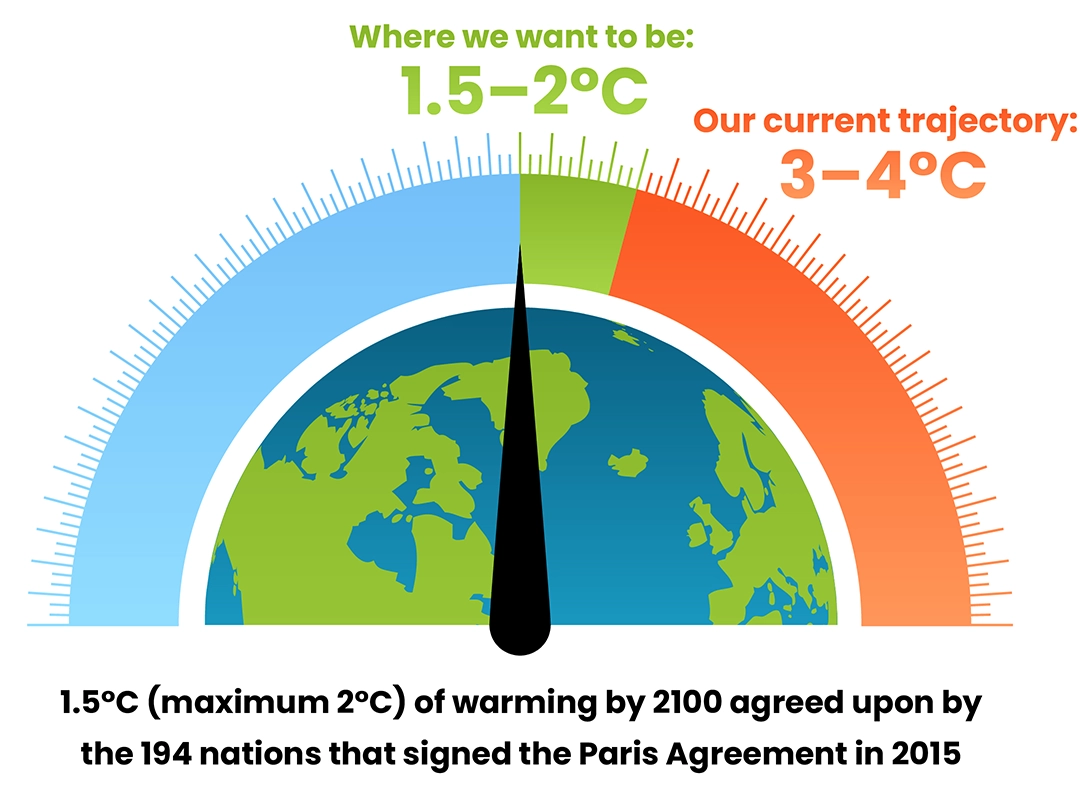
There is a rapidly narrowing window of time to implement existing commitments and raise ambition2. See Why So Urgent?
As per the Paris Agreement and subsequent IPCC modelling and research updates, we need to reduce our emissions by 43% below 2019 levels by 2030 in order to have a good chance of hitting Net Zero emissions by 2050 and avoiding the worst impacts of climate change.
The Federal government has initiatives and funding in place to promote sustainable aviation, rail and public transit as well as the decarbonization of commercial buildings (including those in the service industry.) Provincial and municipal initiatives are also being implemented to support cleaner public transportation. Similar initiatives are being explored and implemented around the globe.
Currently however, there are no sustainable ways to fly and, in Canada, no sustainable long distance rail options.
It’s going to take more time to make reductions in these sectors so we need to reduce or compensate for our emissions until solutions become available.
Other initiatives apply to the decarbonization of commercial buildings including those in the service industry. Some Provincial governments are also leading the way to decarbonizing public transportation and commercial buildings (notably B.C.)
Travel
If you are looking for data on the Carbon Footprint of different modes of travel you will get a wide range of numbers that depend on a multitude of factors.
The main driver of course is the type and amount of fossil fuel used (whether directly by the mode of transportation or indirectly via powering the electricity grid.) These factors in turn depend on the location you are travelling to/from and within, the age/efficiency and size of the vehicle/plane/train, the length of the trip, whether you are using road transportation within a city or on open highways etc.
There are also other relevant factors like the number of passengers, the class of ticket, how many stops are made along the way, whether you are avoiding other carbon costs (e.g. a hotel and/or rental car by taking an RV or an overnight train/flight), etc.

The answer to the question “what is the best mode of transportation?” (assuming there is more than one choice) is often—it depends.
That said, there are some tools and rules of thumb you can use for lower emissions travel.
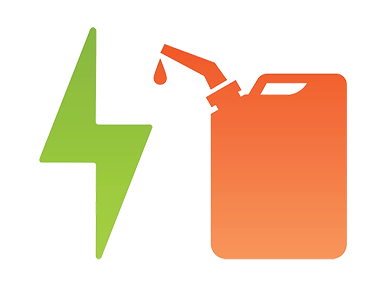
• Electric is almost always better than fossil fuelled transportation.
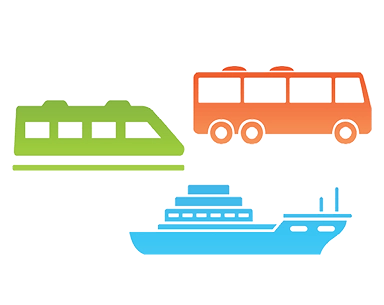
• Ferries, subways, trams and buses are (usually) relatively low carbon modes of transit.

• In Europe, trains are almost always better than airplanes; in the US — it depends on the train so you need to do a bit of research; in Canada — airplanes are more climate friendly than Via Rail (but not more friendly than driving an EV!); for other destinations, you need to look into the options.
(Note that google travel will give you estimates for train emissions but they are based on global average data and are not actually very relevant for a particular location or trip, particularly in North America.)
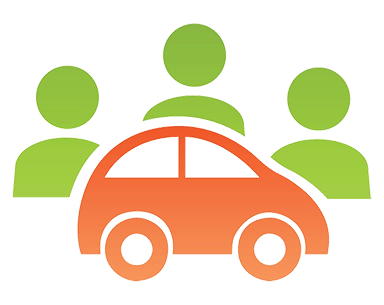
• Hiring a rideshare, renting a scooter, taking public transit and of course getting around by foot or bike is better than renting a fossil fuelled car if possible.
The Problem with Flights
Flying is one of the most energy-intensive forms of consumption and a significant contributor to global warming and the emissions from flying are disproportionately on the shoulders of a small proportion of people.
Only 1% of the world population emits 50% of the CO2 from commercial aviation. A handful of high-income countries including Canada bear the bulk of responsibility for carbon emissions from flights6, and within Canada, the ~40-50% of people that fly, and particularly the frequent flyers and private flight “high emitters” are disproportionately responsible for emissions from aviation3.
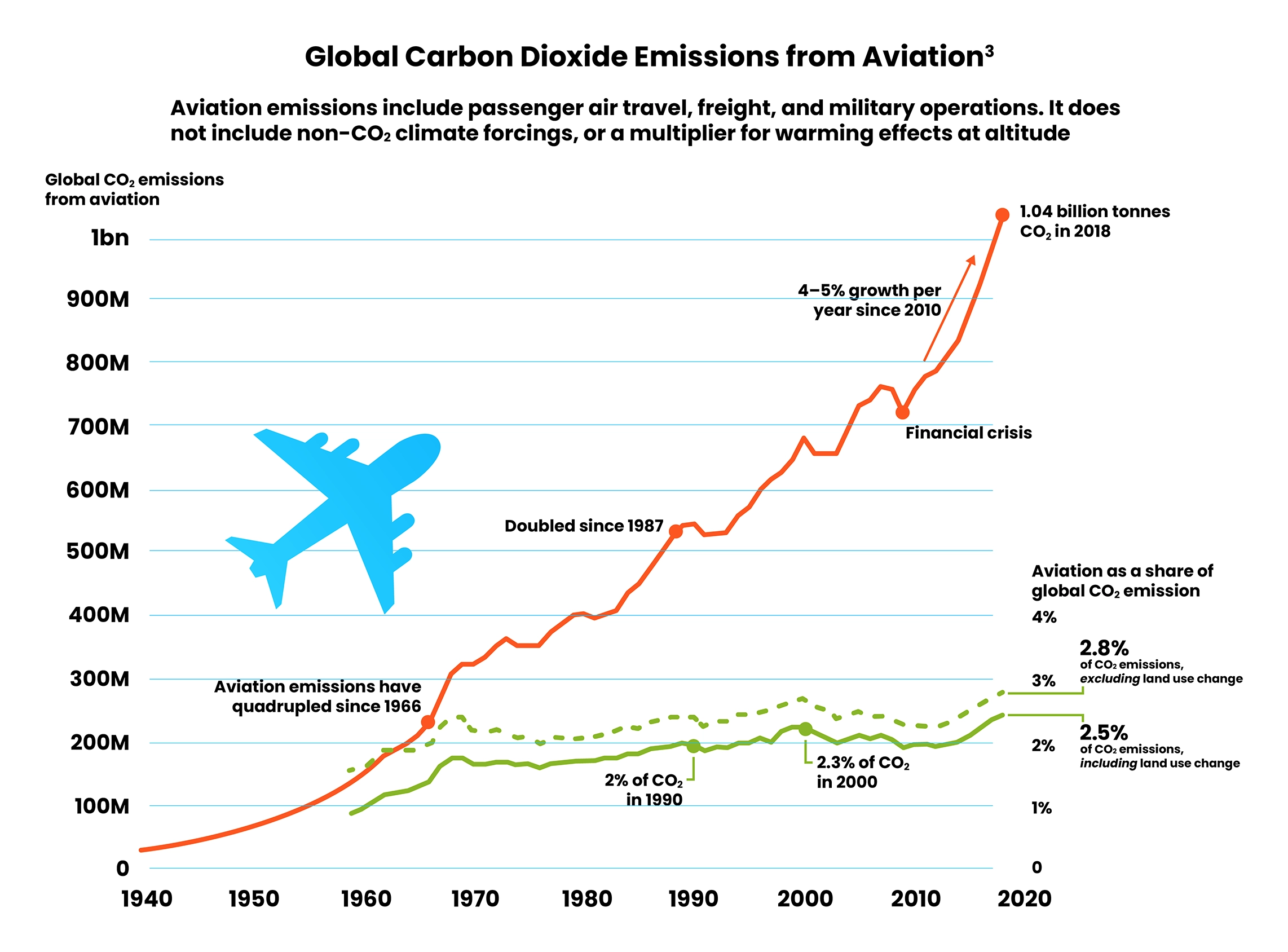
Reducing flights wherever possible until there are good solutions will have a disproportionately large, positive impact on a high emitter’s Carbon Footprint.
Domestic Aviation
We are one of the highest emitting countries for domestic aviation.
Below are some examples of per passenger emissions of single two-way flights (based on typical occupancy.)
Average per capita footprint overall:
Global — 5–7 tonnes/yr
Canada — 17.5 tonnes/yr
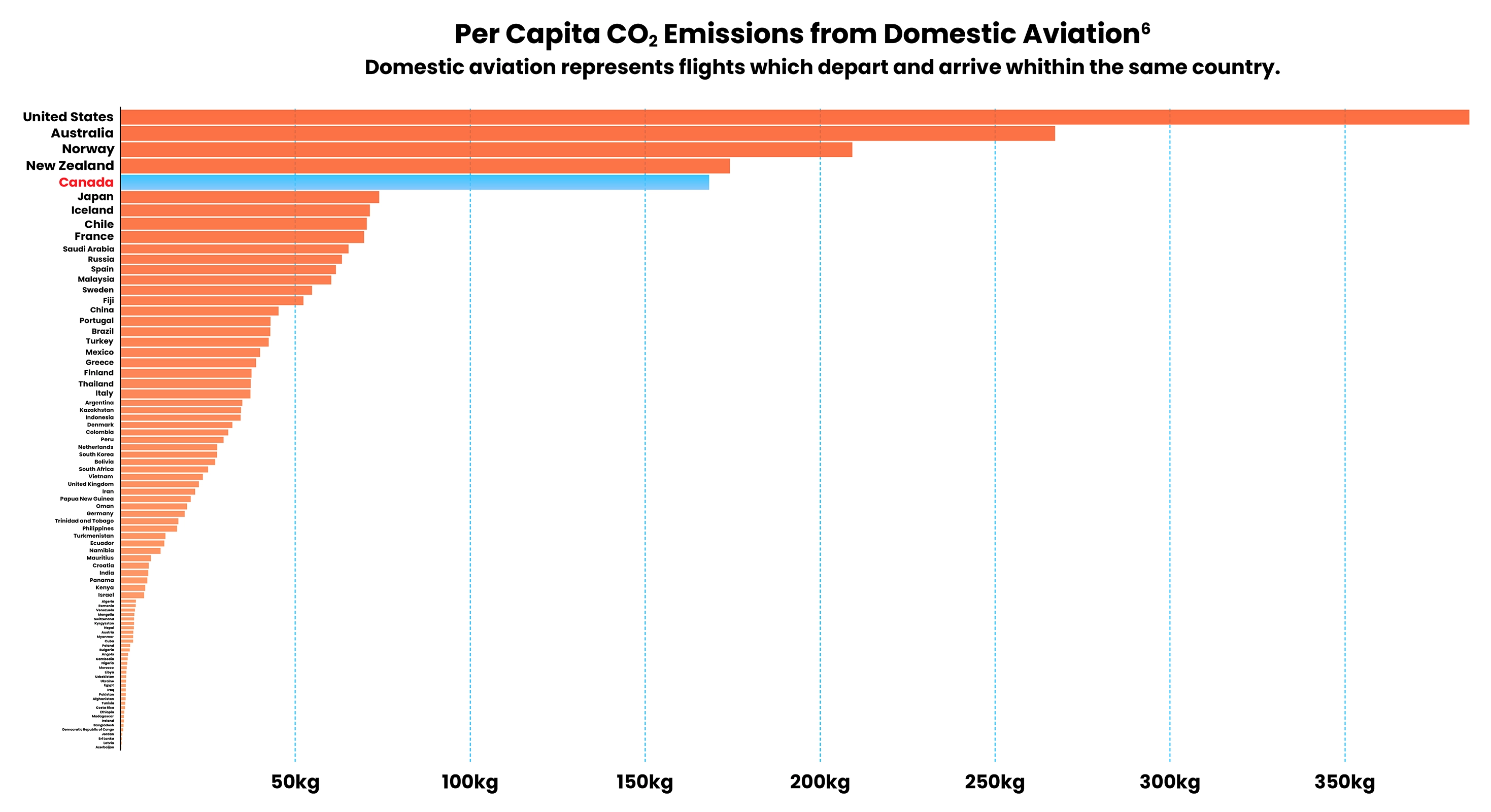
International Aviation
There are aspirational plans, but no commercially viable paths to Net Zero 2050 for aviation right now. There are some emerging and/or small scale solutions but none with a viable path to Net Zero and none that can be deployed at the scale needed to support current flight demand.
Unlike many other sectors that have reasonably clear paths to our no/low carbon future, with potential to align with the Paris Agreement goals, aviation is one of those hard to abate sectors for which there isn’t a credible path to Net Zero just yet.
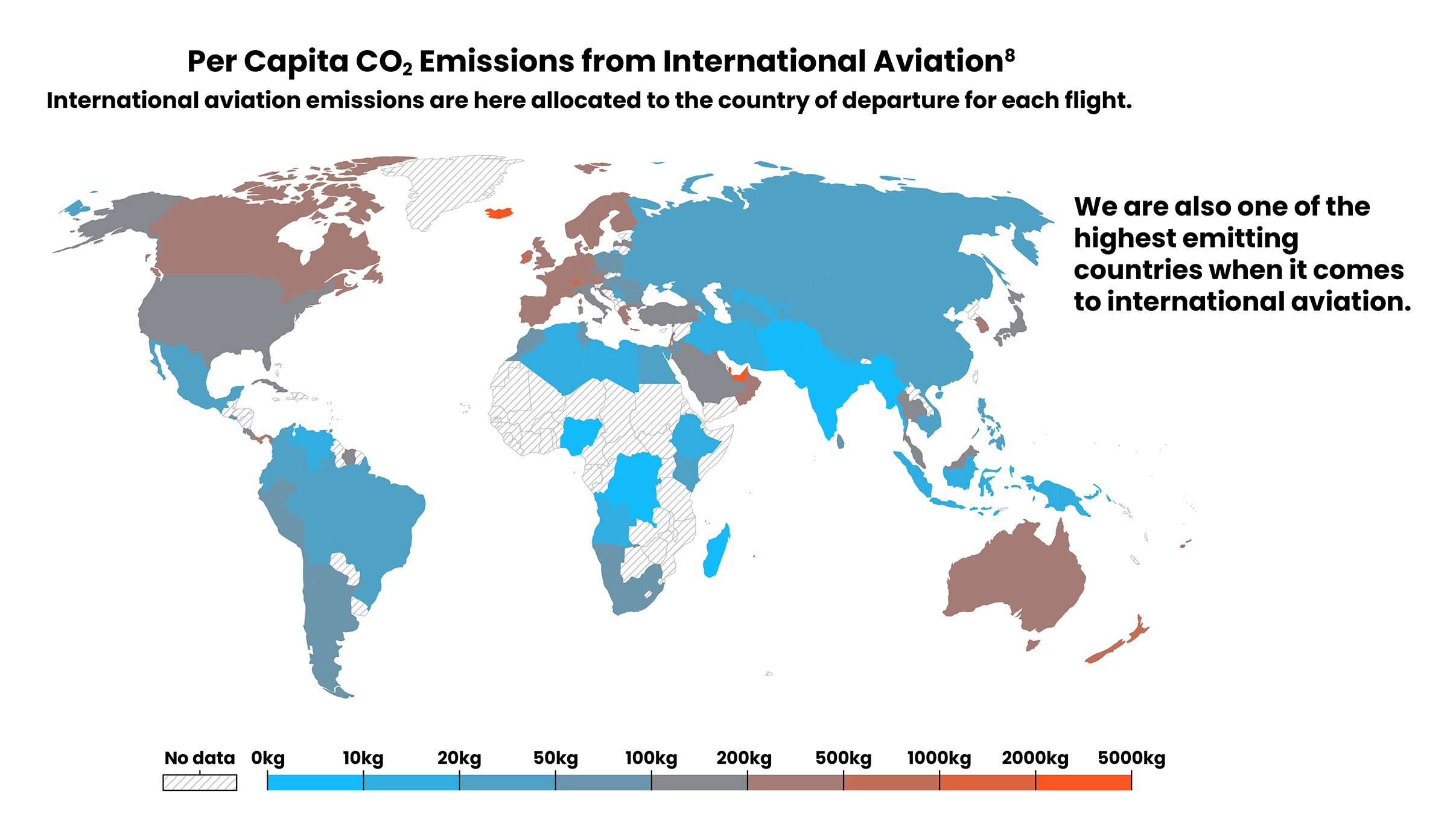
| Economy tonnes CO2 | Business tonnes CO2 | ||
|---|---|---|---|
| Short haul | Toronto to NYC | 0.11 | 0.26 |
| Vancouver to Seattle | 0.10 | 0.18 | |
| Vancouver to Calgary | 0.13 | 0.17 | |
| Medium haul | Vancouver to LA | 0.24 | 0.56 |
| Toronto to San Francisco | 0.48 | 0.80 | |
| Toronto to Vancouver | 0.46 | 0.75 | |
| Long haul | Toronto to London (UK) | 0.78 | 1.63 |
| Ultra Long Haul | Vancouver to Halifax | 0.66 | 1.04 |
| Toronto to Sydney (AU) | 2.02 | 7.51 |
Significant gains in efficiency have been made over the last few decades but the resulting emissions reductions have been more than compensated for by increases in the volume of flights.

Hydrogen fuel is being explored but is not a viable option in the near term for a number of reasons (cost, availability, lack of clean sources, safety/lack of compatibility with current infrastructure etc.)4

Electric planes may have a place in future for short flights on small planes but are not a viable alternative to jet fuelled planes5
The most promising solution is the development of Sustainable Aviation Fuels, primarily biofuels. The industry projects that SAF could account for a 65% reduction in emissions but there are many challenges to reaching this goal. Some barriers include land requirements for SAF production at the volume needed, competition for biofuels from other industries and inadequate standards, policies, and funding for SAF fuels7.
In 2024, SAF production is expected to triple from 2023 levels, but this will still only represent 0.53% of aviation’s fuel requirements9. And most SAFs are not Net Zero carbon; they may range from net negative (which is great!) to only a 10% emissions reduction as compared to fossil jet fuel.
Although there is a lot of recent positive momentum in this space, the Net Zero 2050 path remains aspirational and the majority of flights today are extremely carbon intensive.
If you fly (and particularly if you are a frequent flyer), you can reduce your footprint by
• Flying less — making some of your trips closer-to-home or drive-able adventures.
• Flying less for business by replacing trips with virtual meetings and events at least some of the time or for long-haul flights.
• Flying economy instead of business or first class.
• Selecting the flight with the lowest emissions https://www.google.com/travel/flights (note, Kayak and a few other sites list emissions as well and may report slightly different values.)
• Taking a less carbon intensive mode of transit for part of your journey where possible.
• Purchasing credible offsets (ie. with permanence and additionality) for your flight to at least account for the carbon in some way such as Gold Standard.
• Purchasing SAF fuels—for example, Scandinavian Airlines (SAS) allows you to purchase biofuels for your flight upon booking (the biofuels would not necessarily be for your specific flight but the equivalent would be used on another flight. https://www.flysas.com/ca-en/bio/.) You can also purchase SAF to partially or fully cover any flight through the following site. Note that there are options for individuals, businesses and travel companies — spread the word. https://skynrg.com/saf-for-travelers/
When travelling around while at your destination consider these options

• Use a rideshare service like Uber and select the ‘Uber Green’ option (an EV or hybrid.)
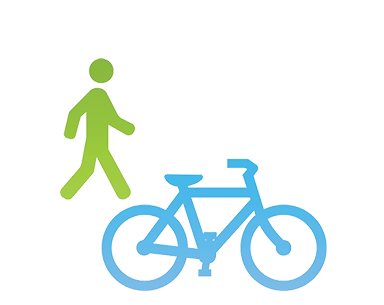
• Walk or bike/e-bike (sometimes these options are available at the hotel or within the city.)

• Use public transit.

• Take a cab (esp. if they are electric or hybrid as well.)

• Consider renting an EV if you need to rent a car — e.g. UFO drive (a touchless Tesla rental service) or ask for one at a car rental service.

• Rent a scooter or an electric motorcycle.
A little about cruise ships
The world’s largest and most efficient cruise ships emit about 250g CO2/passenger/km (based on a double occupancy standard cabin). This doesn’t factor in the other climate pollutants and GHGs like methane, black carbon, and contrails which increases the footprint by up to 3x10.
Although is sector is also aiming to reduce its Carbon Footprint — transitioning from highly polluting heavy fuel oil to liquified natural gas (LNG), methanol or biofuels (requiring new ships) — pollution from cruise ships is still extremely high.

As an example, a 7-day trip in a standard cabin with 2 people on a ship carrying 2000–3000 people emits about 2.4 tonnes CO2 per person. A 21-day cruise in a suite for 2 people on a ship carrying 1000–2000 people emits about 10.5 tonnes CO2 per person.
A couple of cruise companies are starting to roll-out less polluting ships11, but the alternative fuels are scarce resources with competition from other hard to abate sectors so are not scalable solutions for the industry on the whole.
If you are committed to booking a cruise, try to investigate which ones may be piloting alternative fuels or perhaps wait a few years for these ships to become available.
Alternatively, if you have a cruise booked already, you can perhaps purchase offsets via the link above.
If you can travel a different way, it will have a significant positive impact on your emissions.
Choosing a Sustainable Hotel
There are a lot of ways that hotels are addressing climate change and sustainability more broadly.
Many hotels as well as some bed and breakfasts, hostels, resorts, and vacation rentals use sustainability certifications. Some travel booking sites display these — though not always consistently.
| Site | Sustainability Standard | Visibility of Sustainability Standards |
|---|---|---|
| Booking.com | Travel Sustainable designation11 based on GSTC criteria | Best — On list results page. Has travel sustainable filter with levels of sustainability. |
| Agoda.com | Good — On list results page. Has a travel sustainable filter. | |
| Kayak.ca | Good — On list results page. Has a travel sustainable filter. | |
| Priceline.com | Good — On list results page. | |
| Google.com | Eco-certified label (Greenseal) | Highly visible on listing page but not visible when searching through Google Maps. |
| Travelocity.ca | Green Key | Can filter by eco-certified under traveller experience. |
| Tripadvisor.ca | Greenleader designation with levels, currently only for US hotels | Poor visibility but included hotel profile. Has a special green version of their logo but I can’t find an example of where it is used. Eco-friendly box in vacation rental filters but hidden. |
| Expedia.ca | Shows hotel sustainability notes in profile | |
| Hotels.com | May list sustainability ratings under ‘awards’ | |
| Trivago.com | May list sustainability ratings under ‘awards’ |
Travelife — Recognized by the Global Sustainable Tourism Council (GSTC.) Involves independent on-site audit.
Greenseal — Used by google (though google may use others as well.)
The Audubon Green Leaf Eco-Rating Program for Hotels — Involves an independent audit and certification process.
GreenGlobe — Measures ESG metrics including supply chain measures. Extensive measures and 3 certification levels. Certifies hotels, resources, conference centres and attractions.
Green Key Global — Eco rating is based on 160 question self-assessment across a range of areas.
GreenPearls — Certifies hotels, vacation rentals, business hotels and restaurants.
There are also region specific sites:
Search for certified eco-hotels, sustainable hotels, eco-tourism, green hotels for your destination for more information. Note: In particular, look for third party audits/certification and GSTC recognition.
Eating out
A number of restaurant certification sites are available and are starting to build their memberships. Most reservation apps don’t have a sustainability rating just yet. I’ve included a few resources you can use below (mostly for North American cities.)
Sustainable Gastronomy — Michelin is ahead of the curve with their green star rating — if you are splurging.

Happy Cow — If you are vegan or vegetarian, are travelling on meatless Monday, or simply want to take the opportunity to try a meatless meal created by a pro, check out this site. Included are restaurants from around the globe.
Green Restaurant Association — Also check out the Green Restaurant Association’s certified members list (North American Focus)
Planning for more eco-conscious travel — what to bring

• An empty re-usable water bottle (if flying, bring in carry-on to fill at the airport so you don’t need to use plastic.)
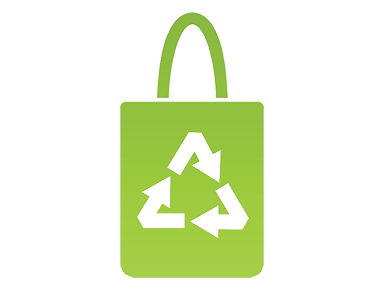
• A collapsible carry-bag for shopping (if flying, bring in carry-on in case you buy things at the airport.)

• A compact set of bamboo travel utensils in case you eat somewhere (eat-in or takeout) that provides plastic utensils.

• Traveller cup — for coffee/tea/beer/wine.

• Eco-friendly sunscreen if heading to a beach. (e.g. Koola)
Low and High carbon-intensity activities on holidays

Low Carbon
• Museums, tourist building sites, aquariums, churches
• Cycling, canoeing, kayaking, hiking, horse-riding, Yoga, eco-spa, sailing, ferry/boat ride (if electric or hydrogen-fuelled), scooter rental, beach activities, waterfalls, parks, gardens, some sporting and music events (if you and the venue use sustainable practices12)
• Eating/drinking at sustainable establishments
• Staying in a sustainable hotel

High Carbon
• Diesel/heavy fuel boat tours (including ferries, cruises)
• Gas boat-rides, whale-watching, helicopter rides, driving tours in a gas car/truck, eating at unsustainable restaurants (including fast food with lots of waste), buying Fast Fashion on your trip, buying plastic souvenirs for the sake of it, staying at unsustainable hotels/vacation rentals
Summary of potential actions
• Fly less
• Fly more sustainably or reduce travel KMs by flight
• Offset flights / buy SAFs
• Avoid Cruises
• Consider sustainable modes of travel while on your trip
• Choose sustainable accommodations
• Eat sustainably on your trip
• Prioritize low carbon activities and avoid high carbon activities
• Bring sustainable travel gear
• Offset your travel emissions
• Advocate for policies supporting decarbonization of aviation, hotel and accommodations, and other relevant sectors
• Share sustainable/low carbon information, experiences and recommendations with family, friends, colleagues, etc.
Ready to get started? Build a plan that works for you here.
References
1. Lang, T., Li, G., & Mattie, S. (2022, March 28). Data for Canadian Greenhouse Gas (GHG) emissions attributable to household consumption and use of select goods and services along with the associated emissions intensity figures and breakdowns by final demand categories. Government of Canada, Statistics Canada. https://www150.statcan.gc.ca/n1/pub/11-627-m/11-627-m2022003-eng.htm
2. Environment and Climate Change Canada. (2022). 2030 Emissions Reduction Plan — Canada’s Next Steps for Clean Air and a Strong Economy. https://publications.gc.ca/collections/collection_2022/eccc/En4-460-2022-eng.pdf
3. Gössling, S., & Humpe, A. (2020, November 1). The global scale, distribution and growth of aviation: Implications for climate change. Science Direct. https://www.sciencedirect.com/science/article/pii/S0959378020307779#b0485
4. Could Hydrogen Power Planes?. TWI. (2021, December 22). https://www.twi-global.com/technical-knowledge/faqs/could-hydrogen-power-planes
5. Bergero, C., Gosnell, G., Gielen, D., Kang, S., Bazilian, M., & Davis, S. J. (2023, January 30). Pathways to net-zero emissions from aviation. Nature News. https://www.nature.com/articles/s41893-022-01046-9
6. Per capita co₂ emissions from domestic aviation. Our World in Data. (2019). https://ourworldindata.org/grapher/per-capita-co2-domestic-aviation
7. Net Zero 2050: Sustainable Aviation Fuels. IATA. (2023, December). https://www.iata.org/en/iata-repository/pressroom/fact-sheets/fact-sheet—alternative-fuels; sustainable aviation fuel (SAF). ICAO. (n.d.). https://www.icao.int/environmental-protection/pages/SAF.aspx; Graver, B., Zheng, X. S., Rutherford, D., Mukhopadhaya, J., & Pronk, E. (2022, June). Vision 2050: Aligning Aviation with the Paris Agreement. The International Council of Clean Transport. https://theicct.org/wp-content/uploads/2022/06/Aviation-2050-Report-A4-v6.pdf
8. Per capita co₂ emissions from international aviation. Our World in Data. (2018). https://ourworldindata.org/grapher/per-capita-co2-international-aviation
9. SAF volumes growing but still missing opportunities. IATA. (2023, December 6). https://www.iata.org/en/pressroom/2023-releases/2023-12-06-02/
10. Comer, B. (2022, May 16). What if I told you cruising is worse for the climate than flying? https://theicct.org/marine-cruising-flying-may22/
11. Spiller, D. (2023, November 7). Carbon Footprint of Cruise Ships Emissions Calculator: By location, Miles. 8 billion trees.com. https://8billiontrees.com/carbon-offsets-credits/carbon-footprint-of-cruise-ships/
12. Sustainability. Climate Pledge Arena. (2023). https://climatepledgearena.com/sustainability/


